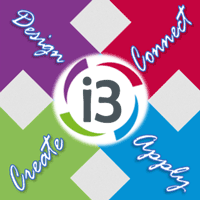Year 1 Comprehensive eMINTS Professional Learning Graduate Credit
Begins 05/01/2020
Only teachers participating in i3/eMINTS Comprehensive Professional Development in 2019-2020 are eligible to enroll in this course.
NOTE: The graduate credit for this course also requires registration with Southern Utah University.
eMINTS is a two year comprehensive program of professional development that helps k-12 schools prepare students for a modern digital-age society. The eMINTS Instructional Model supports high-quality lesson design, promotes authentic learning, empowers technology-rich learning environments, and builds community among students and teachers. In the first year of eMINTS professional learning, participants develop skills in building a collaborative classroom environment that supports student-centered learning. They incorporate strategies for inquiry including techniques for promoting student questioning. A focus on design helps teachers create effective lessons by breaking down standards, developing essential questions, and implementing effective assessments. Participants conclude the year by developing a problem-based lesson for their classroom. Technology applications are woven into every aspect of the learning. Participants analyze their own technology classroom integration by using a combination of the SAMR model and Bloom’s Taxonomy. They learn to incorporate technology effectively in a one-to-one classroom.
Expected Learning Outcomes
- Participants use the basic features of Google Applications for Educators including Google Drive, Docs, Sheets, and Forms.
- Participants identify classroom routines that support fluid technology use including a classroom web space/learning management system that supports student learning.
- Participants identify and use instructional strategies that reflect constructivist principles.
- Participants strive to effectively use team and class-building activities, cooperative learning structures, and inquiry experiences in their daily lessons.
- Participants build strategies for supporting students in the safe and secure use and handling of technology.
- Participants search for effective internet learning resources and curate them using an online curation tool.
- Participants use online tools to develop formative assessments that effectively determine student needs, encourage self-direction and collaboration and monitor student progress, as well as to check for student understanding and to promote metacognition.
- Participants will use a variety of strategies to encourage their students to ask good questions that promote curiosity and drive learning.
- Participants use online tools to develop scaffolds that support student learning.
- Participants will design an inquiry-based task and facilitate with their students.

